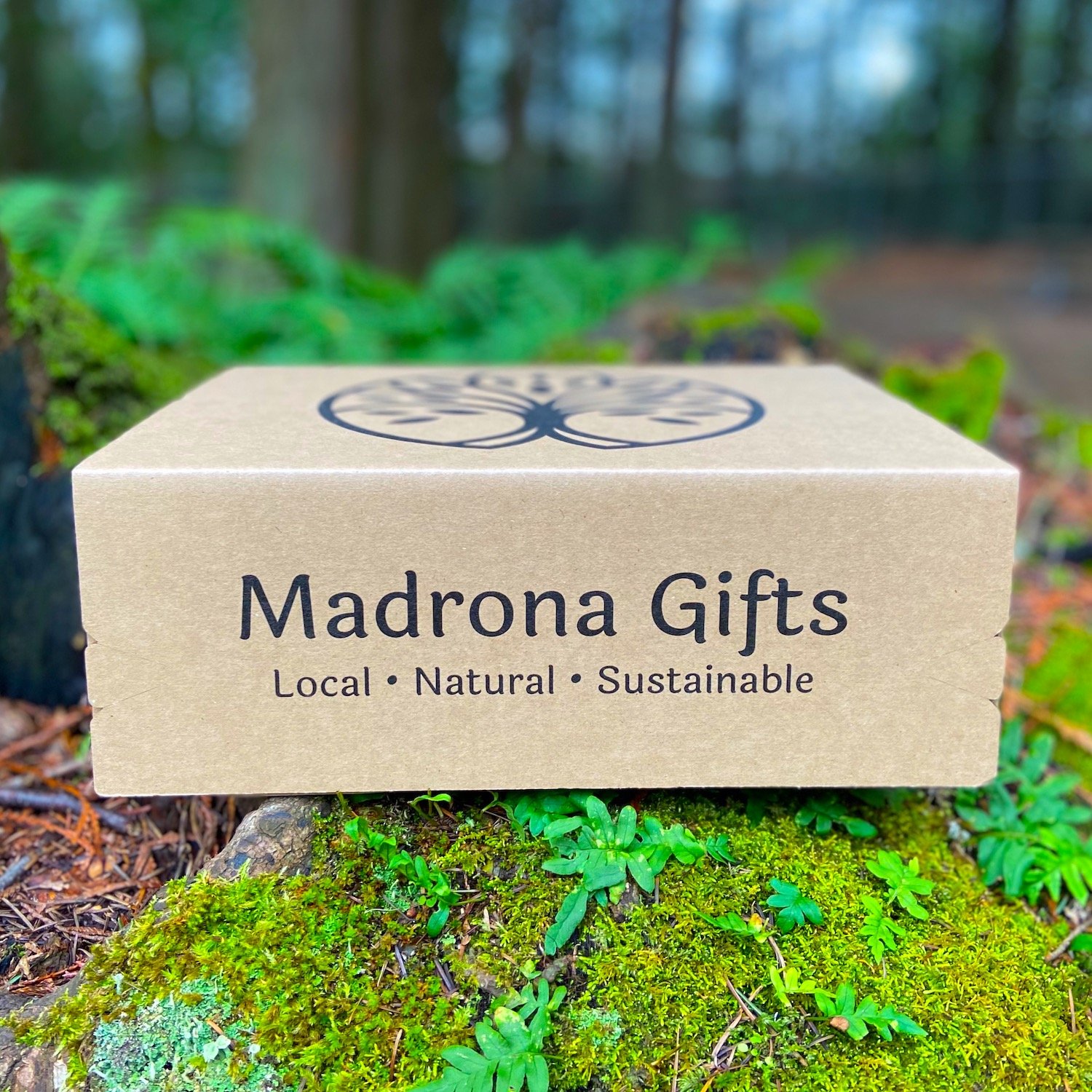Box is the New Basket
Earth Month is an important opportunity to reflect on ways to shift our current habits and expectations to better meet the world’s changing needs. Change is hard, and transforming lifelong habits takes great mindfulness and dedication.
The traditional gift basket is one of those habits that, collectively, is hard to break. The concept is, of course, a wonderful thing; a loving gesture of gratitude, congratulations, or sympathy, wrapped in a bow and delivered to one’s door is about as thoughtful as it gets. However, while a lot of thought goes into the front end of the gesture, very little goes into the back end, resulting in an aftermath of unnecessary waste.
Woes of the Conventional Gift Basket
Earth-Friendly Alternatives
• Reusable or recyclable glass or aluminum jars and bottles
• Compostable packaging and wrapping instead of plastic
Many of our edible have compostable packaging, like those pirctured here.
1. Plastics: If we have any hope of keeping microplastics out of our oceans, food, and water supply, we have to rethink the materials we use in our households and small businesses. Conventional gift baskets are rife with plastics: The baskets themselves are often plastic; the items in them are often packaged in plastic; and that single use plastic sheet that blankets the traditional gift basket is the worst of all. Of course, some plastic packaging is hard to avoid - in food distribution in particular. But when there are eco-alternatives available - even if they cost just a little bit more - we have no excuse not to use them.
Earth-Friendly Alternatives
• Shop small and support local
• Look for products with pure, simple, and minimal ingredients
• Avoid trans-fats, palm oil, phthalates, and artificial preservatives
We source from companies that prioritize health and sustainability.
2. Questionable Contents: Unless you buy directly from a small, conscientious business, it’s hard to know where the items in your gift basket originated and what they might contain. Consumers are increasingly concerned with suspect ingredients in their food and beauty products, avoiding trans fats, endocrine disruptors like BPAs (found in plastic) and phthalates (found in some artificial fragrances). Conventional gift baskets are often filled with random “stuff” sourced from who-knows-where with little consideration for ingredients or packaging. Cost is often a telling clue, with an inverse relationship between price and health/environmental cost.
Earth-Friendly Alternatives
• Choose recyclable or reusable boxes or baskets
• Prioritize simple and natural packaging, including fill and frill
• Opt in to carbon-neutral shipping
Our wooden gift baskets present beautifully with a simple burlap bow.
3. Delivery Dilemma. Gift baskets are best hand delivered to maintain their integrity. If they are shipped, it involves an excessive amount of additional packaging to keep the contents secure and intact. This means they cannot travel far without a plethora of added waste and cost. Gift boxes, on the other hand, are designed for travel. Slip on a recyclable shipping label or tie on a compostable bow, and you’ve got the same delightfully simple, secure, and sustainable presentation no matter where your box is headed.
Make the Switch for our Health and Future
The traditional, randomly curated, plastic enshrined gift basket has been an ugly American habit for decades now, and old habits die hard. But as James Clear writes in his book, Atomic Habits, “Habits are not a finish line to be crossed, they are a lifestyle to be lived.” Change your lifestyle and consumption choices and you can change the world, one gift at a time.
We take great pains at Madrona Gifts to source only the highest quality goods and limit the environmental impact of everything we do. To read more about our efforts, see our previous blog post “The Purpose in our Products, Packaging, and Shipping.”
Additional reading on the topic:




